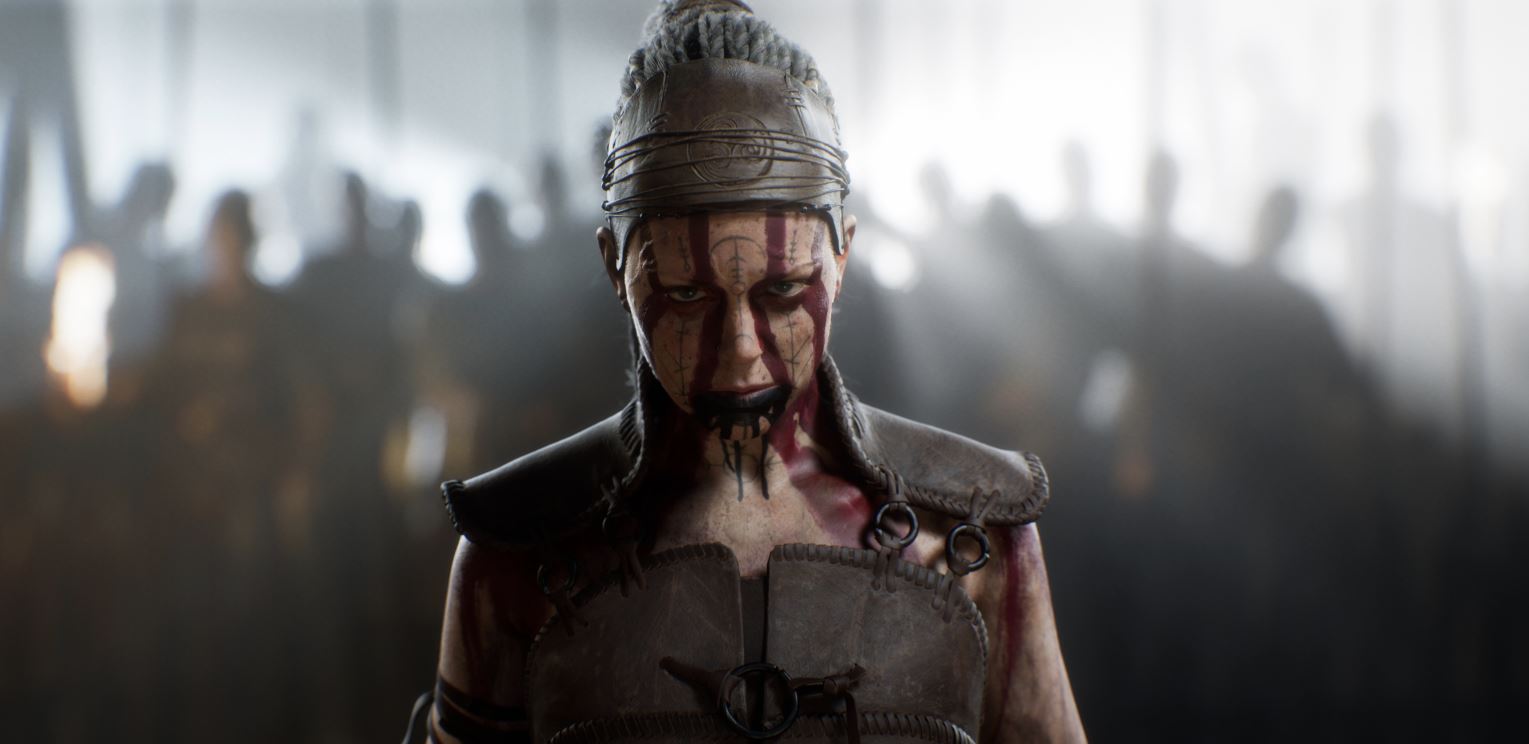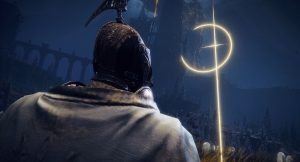
There are times when you’ll beg for Senua’s Saga: Hellblade II to just let go. Much like its predecessor, Hellblade II is a cinematic linear adventure that follows the warrior Senua as she battles real-world and psychological horrors on her quest for inner peace and a sense of belonging.
Actually, linear doesn’t begin to describe the process of “playing” Hellblade 2, such as it is. Though Hellblade 2 features more NPCs, puzzles, and combat options than its predecessor, it retains that game’s guided design. Most of your time will be spent walking along a path while things happen around you rather than because of you. There are exceptions, but the rule often limits your interactions to moving forward. Even then, a surprising amount of this 6-8 hour adventure is largely non-interactive.
It’s a style of design that I’m generally not a fan of. While I love the best so-called “Walking Simulators” such as What Remains of Edith Finch, placing me in a narrative-driven fantasy world, putting a weapon in my hands, and asking me to solve puzzles invokes certain expectations Hellblade 2 doesn’t often try to meet. It is, in many ways, the antithesis of my favorite modern games like Elden Ring which are often designed to give what you put into them. Interpretations and personal reflections will vary, but Hellblade 2 is largely designed to offer the same basic experience.
That approach has been compared to an expanded version of those moments in modern games that see your character slowly shimmy through an opening to disguise a loading screen. Such moments are often the worst parts of games that otherwise endeavor to offer largely unbroken narrative experiences. It’s not an entirely inaccurate comparison. At the end of my Hellblade 2 journey, though, a different comparison sprung to mind: Dragon’s Lair.
Released in arcades in 1983, Dragon’s Lair used revolutionary LaserDisc technology to offer the kind of video game graphics nobody had ever dreamed of before. It was stunning, but it came with a catch. Rather than even try to offer the reflex-driven gameplay that defined arcade titles at that time, Dragon’s Lair limited your control to simple input choices we now refer to as Quick-Time Events. It was closer to an interactive movie.
Yet, Dragon’s Lair is widely considered one of the most important video games ever made. Released during a historically bad time for the video game industry, it gave gamers, developers, and arcade owners what they needed most: hope. It wasn’t that people were begging for more games exactly like Dragon’s Lair. Some were, but its influence wasn’t limited to that. It’s that more people wanted to see gaming survive and grow to support “real” games that looked like Dragon’s Lair. There was suddenly a light in the darkness that people could get excited about.
Since then, we’ve obviously played quite a few games that look significantly better than Dragon’s Lair. In fact, we’ve played so many of them that we’ve arguably found ourselves in a scenario not dissimilar from the one that Dragon’s Lair was released during. Mass layoffs continue to impact a video game industry that’s health and future are as uncertain as they’ve been in decades. Along the way, the unsustainable rising costs of video game development have been fuelled, in part, by rising expectations of what a modern game should look like.
But for all that emphasis on graphics, when is the last time you’ve been truly amazed by video game visuals? At a time when photorealistic excellence has become the standard, when was the last time we got a game like Donkey Kong Country or Crysis that offered such a universally recognized leap forward that you were compelled to play them just to witness the revolution for yourself?
It’s not that visually impressive modern games don’t exist, but rather that the evolution of video game graphics has stalled a bit in the last 10 years or so. Obvious and widely celebrated advancements have been replaced with incremental upgrades that have left us bickering about technical terms like frames-per-second, ray tracing, and shaders. The arguments over and perceived market value of video game graphics haven’t gone anywhere. It’s all just gotten a lot less interesting and generally more detrimental.
That’s the biggest argument for not just Hellblade 2’s design but its value. At a time when the industry is practically killing itself to deliver visually rich games of largely diminishing returns, Hellblade 2 delivers truly stunning visuals that offer more than just a pretty face.
Mind you, Hellblade 2 may very well be the best-looking game ever from a purely technical perspective. If you’re interested in those nuts and bolts, the good folks at Digital Foundry have you covered. But what I’m more interested in is how Hellblade 2 uses those visuals to advance the game’s deeper narrative and emotional qualities
So much of what we need to know about this world and the characters that inhabit it is immediately exhibited through those detailed visuals and unbelievably smooth animations. Honestly, there are times when the game’s writing fails to convey Hellblade 2‘s rich and deep themes as effectively as its graphics. All those grotesque obstacles and moments of mystical wonder are made all the more powerful by the fact that the mere sight of them is as shocking to you as it is to Senua. It is rare to play a game where incredible raw visuals meet artistic direction in a way that not only helps sell the game to the tech-obsessed but effectively conveys the complex narrative elements that define the experience.
Yes, you could say similar things about the original Hellblade, but this sequel offers a couple of advantages. Not only is the technology fuelling it significantly and objectively more impressive but, as noted above, there is more “game’ in Hellblade 2. Not enough for some, perhaps, but there are many more moments when you are offered just a little more freedom to solve a puzzle, win a fight, or interact with others.
It’s a shame that Hellblade 2 sometimes struggles to offer “more” while replicating the surprises of the first game. In those moments when it comes together, though, you are afforded the privilege of experiencing something as beautiful as the game’s presentation.
Hellblade 2 is certainly not perfect. I can’t even confidently say it will live up to the expectations of those who loved the first game. But at a time when it’s becoming increasingly clear that the major players in the video game industry would rather cut staff than cut back on their pursuit of weapons-grade photorealism that rarely offers more than fodder for bloated marketing budgets and tech bros, I find something in Hellblade 2 that people once found in Dragon’s Lair: hope that the light at the end of a dark tunnel will bring us even better games that look this good.
Senua’s Saga: Hellblade II is available now for Xbox Series X/S, Windows PC, and Game Pass.
The post Hellblade 2 Is The Modern Dragon’s Lair Gaming Needs Right Now appeared first on Den of Geek.




